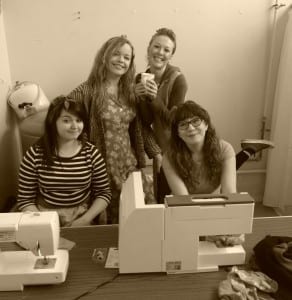‘Site may be transformed by the disruptive presence of performance seeking a relationship other than that of a ready-made scenic backdrop of against which to place its figures.’ ((Brook, Peter (2008) The Empty Space, London: Penguin Classics, p. 45))
On the 1st of May 2013, our group attempted to inject life back into a site that normally lies silent. The research process meant absorbing and collecting the history of the sites past, thanks to The Lincolnshire Archives and The Museum of Lincolnshire Life, for example.
On performance day there were a few last minute adjustments. We had been told that the Grandstand had also been used as a place for blood donation, so we decided that when we take the audience through to the next section, after the rotation, we would thank them for coming and donating their blood to us. This was another moment of the past momentarily switching into the present, showing our aim for celebrating the Grandstand’s history. In addition, it introduced some humour into the piece, as the audience did not know what was coming next.
There were a few hiccups throughout the performance, where the rotation did not work as efficiently as we had hoped, and some audience members were waiting longer than others. We do hope, however, that as our sub group was a distraction in the same room (applying make up etc.) it meant that the piece did not fall flat, despite the extended time the audience had to wait.
Furthermore, when asking some audience members after the performance, it was clear that some had not noticed the stretch of material along the weighing room. In many respects, it proves the effectiveness of the entire piece as it shows they were immersed in the performance. The material was not on a persons ordinary sight line, as it was above them. As we realised through our ‘Drifting’ task at the beginning of the module, it is not until you intentionally look away from familiarity that you see the unnoticed. If we were to repeat the performance then the positioning of the material however, would be one to reconsider.
Our feedback from the audience was hugely positive and we were all so appreciative that the community had returned to the Grandstand once again. Specifically for our piece, an audience member described a slight sadness and wistfulness when watching us in the factory scene. The combination of 1940s music, the smell of tea and seeing a vision of the past being encapsulated within the space seemed to provoke this feeling. I feel our sub-group achieved the reconstruction of the past and celebration of femininity, but also embodied the hard work and strength that women would have had to demonstrate. We just hope that our representation did them justice.
We all became a ‘disruptive presence’ ((Ibid.)) to the normal order of the site. But I feel it was a worthy disruption. Hopefully, the Grandstand does not lay silent once again, and our project has highlighted the potential for the site. One day, the gateway to Lincoln will hopefully exist once again.
The Women of War during dress rehearsal…
